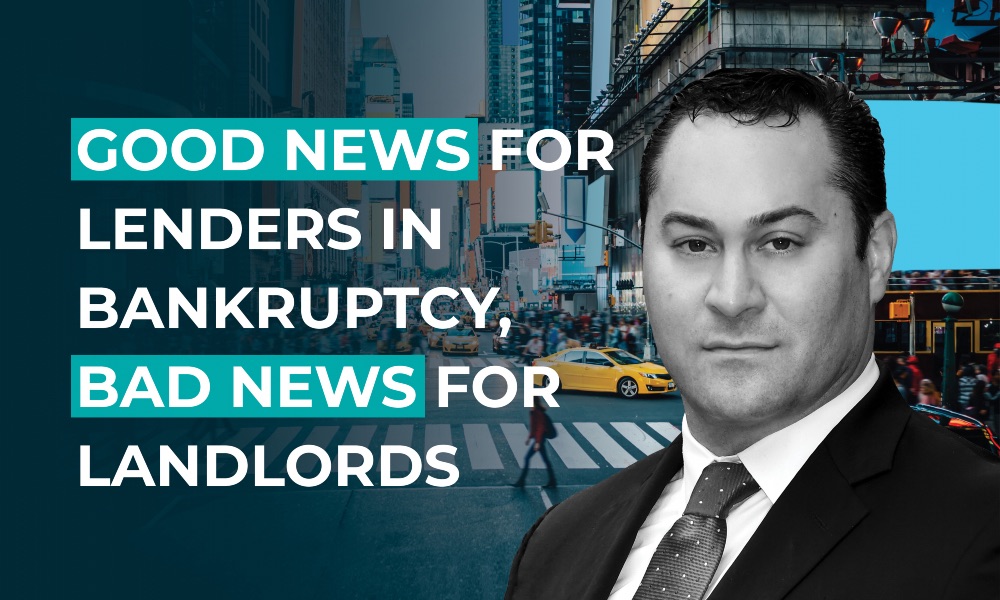As many commercial tenants are in financial distress and U.S. corporate bankruptcy filings hit a 12-year high in the first two months of 2023 (S&P Global Market Intelligence), real estate lenders and landlords have plenty of cause for concern. Recent bankruptcy court decisions reflect some good news for real estate lenders, but bad news for landlords. The good news for lenders is that this year’s decisions show bankruptcy courts are increasingly willing to award interest accrued after a borrower’s bankruptcy filing at the full contractual default rate. Commercial landlords, however, have not fared as well, in that a recent bankruptcy court decision potentially lowered the amount of lease rejection damages that a landlord can seek from a tenant in bankruptcy.
In March of this year, in Official Committee of Unsecured Creditors of Latex Foam International, LLC, et al. v. Entrepreneur Growth Capital, No. 21-cv-1311 (VLB) (D. Conn. March 8, 2023), the United States District for the District of Connecticut affirmed the lower bankruptcy court’s decision awarding a secured lender interest accrued after the borrower’s bankruptcy filing (i.e., post-petition default interest) at the full default interest rate provided under the loan agreement. While Bankruptcy Code section 506(b) provides that oversecured creditors “shall be allowed … interest,” the Bankruptcy Code does not state how much interest or provide instruction on calculating such interest. Nor is there any precedent on this issue from the United States Supreme Court, as the District Court in Latex Foam International acknowledged. Therefore, this has been a contested issue with some bankruptcy courts listing a number of situations that warrant modifying the interest awarded to an amount significantly less than the default interest rate provided in the loan agreement. See In re 785 Partners LLC, 470 B.R. 126, 134 (Bankr. S.D.N.Y. 2012).
In awarding post-petition interest at the full contractual default interest rate, the District Court’s March 2023 decision in Latex Foam International added clarity to the analysis of this issue, concluding that a court should look to “equitable considerations” and certain relevant factors under the particular circumstances, such as (i) whether unsecured creditors are unduly subordinated or harmed by the secured creditors’ priority status, (ii) how large the contractual percentage rate of default interest is, and (iii) how large is the spread of the percentage interest rate between the non-default and default rate. The District Court in Latex Foam International considered these factors and, in awarding the contractual default interest rate sought by the lender, specifically noted that the default rate was only 9.5%, reflecting a spread of only 3% compared to the non-default rate.
With contractual default interest sometimes as high as 18% more than the non-default interest rate, the stakes can be high regarding the outcome of this issue for secured real estate lenders in bankruptcy. John D. Giampolo, a Rosenberg & Estis attorney who leads the New York firm’s reorganization and bankruptcy practice, has seen bankruptcy courts tackle this issue, and he has succeeded in obtaining post-petition interest at the full 24% contractual default interest rate for a secured real estate lender in the Huckleberry Partners, LLC Chapter 11 bankruptcy in the Middle District of Florida in October 2022.
In another 2023 decision involving a commercial landlord’s claim for lease rejection damages, the United States Bankruptcy Court for the Southern District of New York in In re Cortlandt Liquidating LLC, 648 B.R. 137 (Bankr. S.D.N.Y. 2023), effectively lowered the maximum amount of the landlord’s unsecured claim for lease rejection damages recoverable from a tenant in bankruptcy. By way of background, when a debtor-tenant rejects a real property lease of “non-residential real property,” Bankruptcy Code section 502(b)(6) provides a statutory cap on the amount of a landlord’s unsecured lease rejection damages claim in an amount equal to:
- the rent reserved by such lease, without acceleration, for the greater of one year, or 15 percent, not to exceed three years, of the remaining term of such lease, following the earlier of—
- the date of the filing of the [bankruptcy] petition; and
- the date on which such lessor repossessed, or the lessee surrendered, the leased property; plus
- any unpaid rent due under such lease, without acceleration, on the earlier of such dates.
11 U.S.C. § 502(b)(6) (emphasis added).
Courts are divided as to whether the calculation pursuant to Section 502(b)(6) is: (i) 15% of the remaining rent under the lease (the “Rent Approach”); or (ii) 15% of the remaining time of the lease (the “Time Approach”), in either event not to exceed three years. As the Court in Cortlandt Liquidating LLC acknowledged, the Rent Approach vs. Time Approach can “yield significantly different outcomes” for landlords given that rent under commercial leases often escalates over time. The Time Approach places a cap based on rents specified for the first 15% of the remaining lease term (not to exceed three years) and thereby ignores rent escalations that would occur in later years. The Rent Approach imposes a cap based on 15% of all rents that are specified for the entire remaining lease term (not to exceed three years). Thus, by applying the 15% to the total amount of rent due and incorporating all future escalated rent, the Rent Approach could result in a much larger claim for rejection damages.
In Cortlandt Liquidating, Judge Wiles departed from existing precedent in the Southern District that favored the Rent Approach and held that the Time Approach should apply. As such, commercial landlords in a tenant bankruptcy may not realize a full recovery on future rent escalations.

